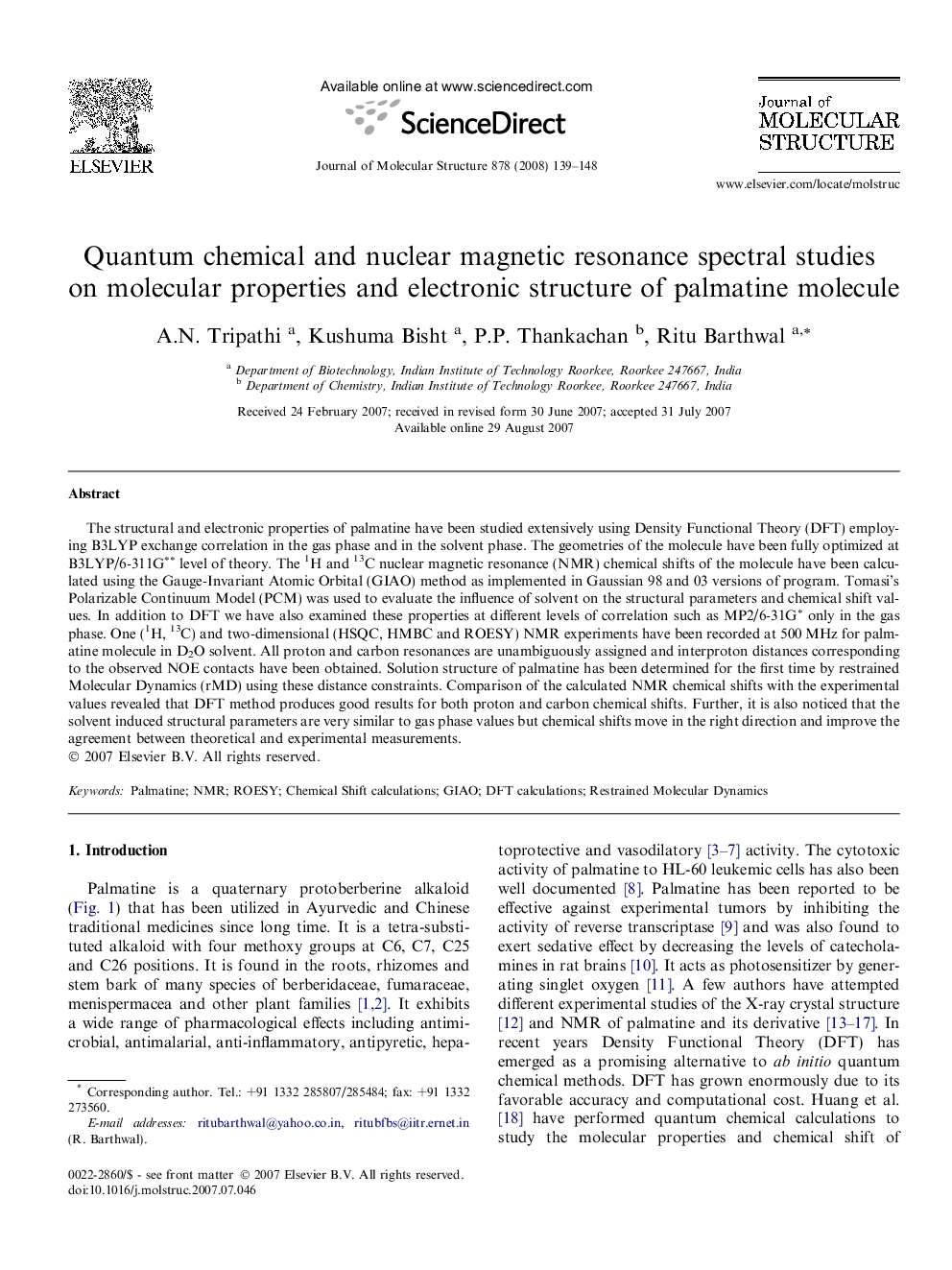| Article ID | Journal | Published Year | Pages | File Type |
|---|---|---|---|---|
| 1407011 | Journal of Molecular Structure | 2008 | 10 Pages |
Abstract
The structural and electronic properties of palmatine have been studied extensively using Density Functional Theory (DFT) employing B3LYP exchange correlation in the gas phase and in the solvent phase. The geometries of the molecule have been fully optimized at B3LYP/6-311Gââ level of theory. The 1H and 13C nuclear magnetic resonance (NMR) chemical shifts of the molecule have been calculated using the Gauge-Invariant Atomic Orbital (GIAO) method as implemented in Gaussian 98 and 03 versions of program. Tomasi's Polarizable Continuum Model (PCM) was used to evaluate the influence of solvent on the structural parameters and chemical shift values. In addition to DFT we have also examined these properties at different levels of correlation such as MP2/6-31Gâ only in the gas phase. One (1H, 13C) and two-dimensional (HSQC, HMBC and ROESY) NMR experiments have been recorded at 500Â MHz for palmatine molecule in D2O solvent. All proton and carbon resonances are unambiguously assigned and interproton distances corresponding to the observed NOE contacts have been obtained. Solution structure of palmatine has been determined for the first time by restrained Molecular Dynamics (rMD) using these distance constraints. Comparison of the calculated NMR chemical shifts with the experimental values revealed that DFT method produces good results for both proton and carbon chemical shifts. Further, it is also noticed that the solvent induced structural parameters are very similar to gas phase values but chemical shifts move in the right direction and improve the agreement between theoretical and experimental measurements.
Keywords
Related Topics
Physical Sciences and Engineering
Chemistry
Organic Chemistry
Authors
A.N. Tripathi, Kushuma Bisht, P.P. Thankachan, Ritu Barthwal,
